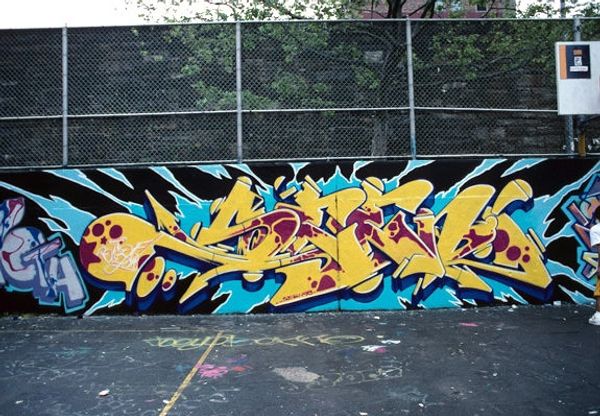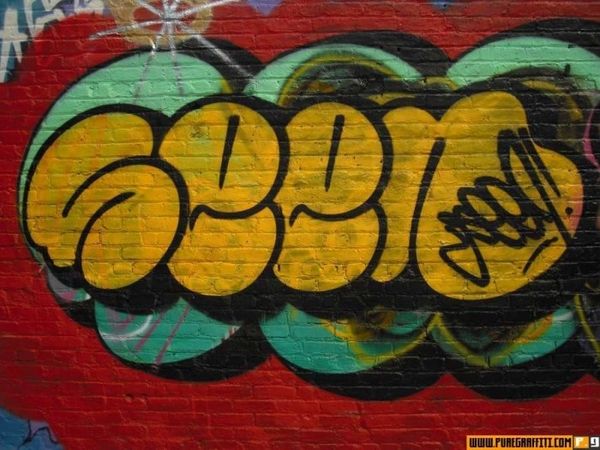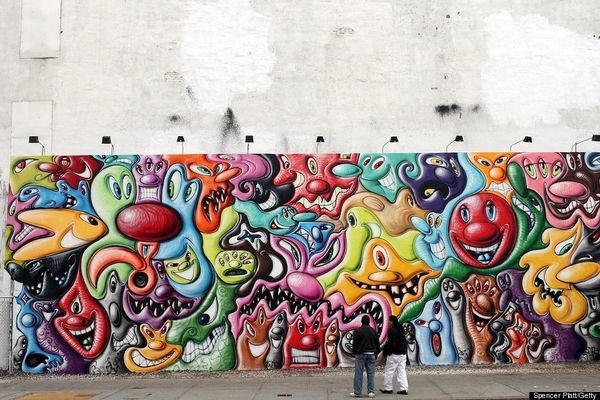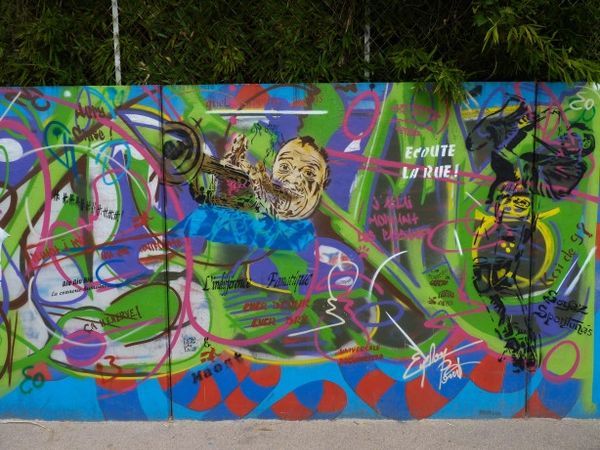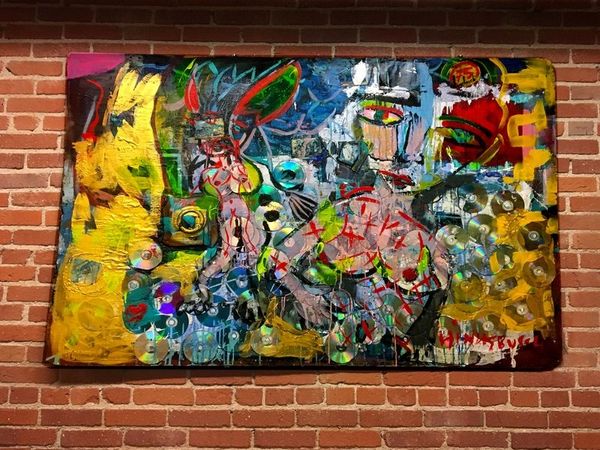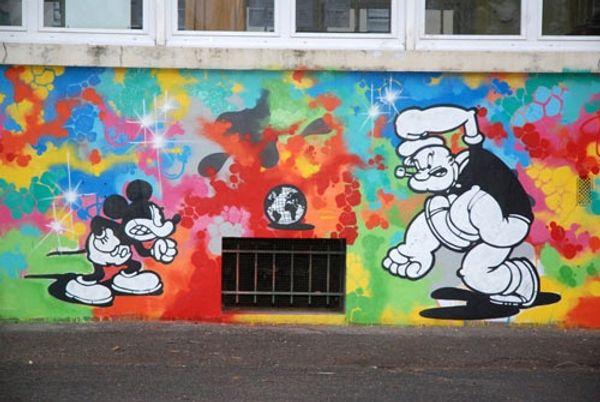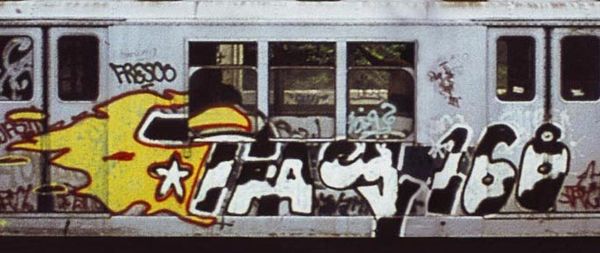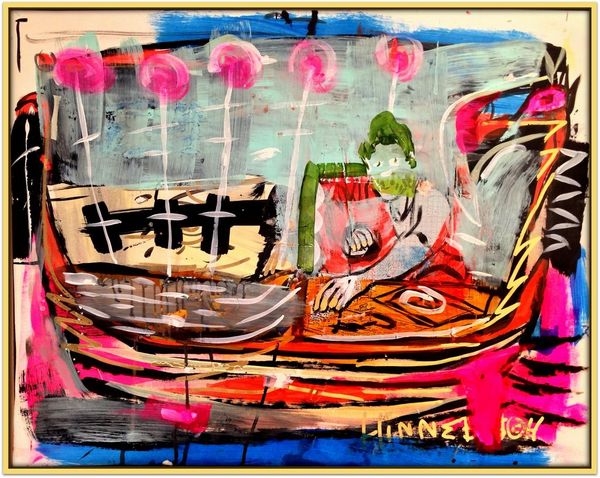
acrylic-paint, public-art, mural
#
public art
#
graffiti
#
contemporary
#
narrative-art
#
graffiti art
#
street art
#
street-art
#
acrylic-paint
#
public-art
#
figuration
#
mural art
#
graffiti-art
#
expressionism
#
mural
Copyright: Lee Quinones,Fair Use
Editor: So, this is "The Lion's Den" by Lee Quinones. It's hard to pin down a precise date, but it’s an acrylic mural, definitely a striking example of graffiti art. It feels… intense, almost like a visual scream with that ferocious lion chained up beside spooky, ghoulish figures. How do you interpret this work? Curator: The intensity you feel is deeply rooted in the socio-political context of its creation. Street art, especially in the late 20th century, was a powerful tool for marginalized communities. This mural speaks volumes about power dynamics. Quinones places a roaring lion, a symbol of strength and dominance, in chains, posing an interesting paradox of raw power versus social constraint. Consider the institutional spaces where art is displayed; did Quinones intend a challenge to the established art world itself? Editor: That's a really interesting angle – I hadn’t thought of the chains as representing societal constraint in relation to the art world! Do you see the artist intentionally aiming for museums and galleries as targets for this mural? Curator: It's likely. Street art exists outside traditional venues. Its defiance, often illegal nature, questions who gets to decide what "art" is and where it belongs. Also, let’s note that alongside the figure of power restrained, a sort of underworld, the skull figures, is shown to dwell nearby, creating visual connections of marginalization and disenfranchisement of 1980s America. Considering these forces, where does the act of creating unsanctioned murals fit into the narrative? Editor: It makes sense that murals and graffiti become forms of visual rebellion, a means of reclaiming public spaces and challenging the established art system. I see the artwork and its placement as equally important and informative! Curator: Precisely. "The Lion’s Den," prompts reflection on the role of art, public access, and who controls the narrative in our culture.
Comments
No comments
Be the first to comment and join the conversation on the ultimate creative platform.
